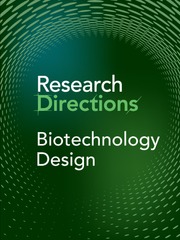Context
“Biotechnology” is defined by the reputed journal Nature Biotech as “[the] technology/methodology of relevance to the biological, biomedical, agricultural and environmental sciences”. Most often, what are defined as biotechnologies are based on the utilisation of cellular or molecular mechanisms for industrial applications, i.e., specific to the recent developments of Western science and livelihoods defined in the capitalist context. However, societies have been using their understanding of biological organisms and systems (biotechnology) to meet various hierarchies of needs (livelihoods) long before western scientists have shaped the understanding of molecular mechanisms. This question invites a wide range of research contributions in which we identify, evaluate and speculate on “what are we missing” in the (western) mainstream definition of biotechnology and design? We invite contributions in “vernacular biotechnologies” that challenge the paradigm that biotechnology and design is a modern discipline practiced by engineers in a laboratory. Vernacular biotechnologies can be common objects that are designed to interface with a living component of everyday life or the environment, and can include work shaped by traditional ecological knowledge (TEK), and/or performed by persons who do not identify as engineers, and/or taking place in non-lab locations such as the kitchen or the field. We also invite critiques of colonial practices in biotechnologies such as biomining or synthetic biology, and their applications.
Contributions
We invite contributions in the following areas:
Results
-
Uses of traditional ecological knowledge (TEK) approaches for knowledge production, product/material/process development and ecosystem stewardship
-
Uses of hybrid TEK/western science approaches (Two-Eyed Seeing) for knowledge production, product/material/process development and ecosystem stewardship
-
Assessment methods and results for understanding the impact of vernacular biotechnologies, or incorporation of vernacular approaches in the assessment of new biotechnologies
-
Examples of in situ deployments of vernacular biotechnologies, or case studies of long-standing ones, including performance assessments, both qualitative and quantitative
-
Culturally informed assessment methods and results for understanding the sustainability and ecological footprint of emerging technologies
Analysis
-
Reviews of vernacular biotechnologies, knowledge production frameworks and case studies.
-
Proposals for design frameworks that implement vernacular biotechnological or TEK approaches. These can include the design of harvest and fabrication processes, social or cultural infrastructures, ritual contexts
-
Horizon scanning or ‘call to action’ articles assessing relevant vernacular biotechnologies or TEK applications
-
‘call to action’ articles assessing academy–industry relationship in the generation of knowledge and its dissemination
Impact
-
Reviews of longitudinal/impact studies of vernacular biotechnological practices
-
Critical evaluation of existing projects, and their likely efficacy, evaluated against existing materials and methods of research and design.
-
Discussions on the legislative, economic, cultural and industrial barriers to inclusive biotechnological design practice
Additional material and early outputs
We welcome a broad range of curated discussion pieces including submission of design portfolios, short polemics, position pieces, calls to action or provocations. As the question content develops, we expect this engagement to comment on the existing archive of published material.
How to contribute to this Question
If you believe you can contribute to answering this Question with your research outputs find out how to submit in the Instructions for authors (https://www.cambridge.org/core/journals/research-directions-biotechnology-design/information/author-instructions/preparing-your-materials). This journal publishes Results, Analyses, Impact papers and additional content such as preprints and “grey literature”. Questions will be closed when the editors agree that enough content has been published to answer the Question so before submitting, check if this is still an active Question. If it is closed, another relevant Question may be currently open, so do review all the open Questions in your field. For any further queries check the information pages (https://www.cambridge.org/core/journals/research-directions-biotechnology-design/information/about-this-journal) or contact this email (biotechnologydesign@cambridge.org).
Competing interests
The author(s) declare none.



